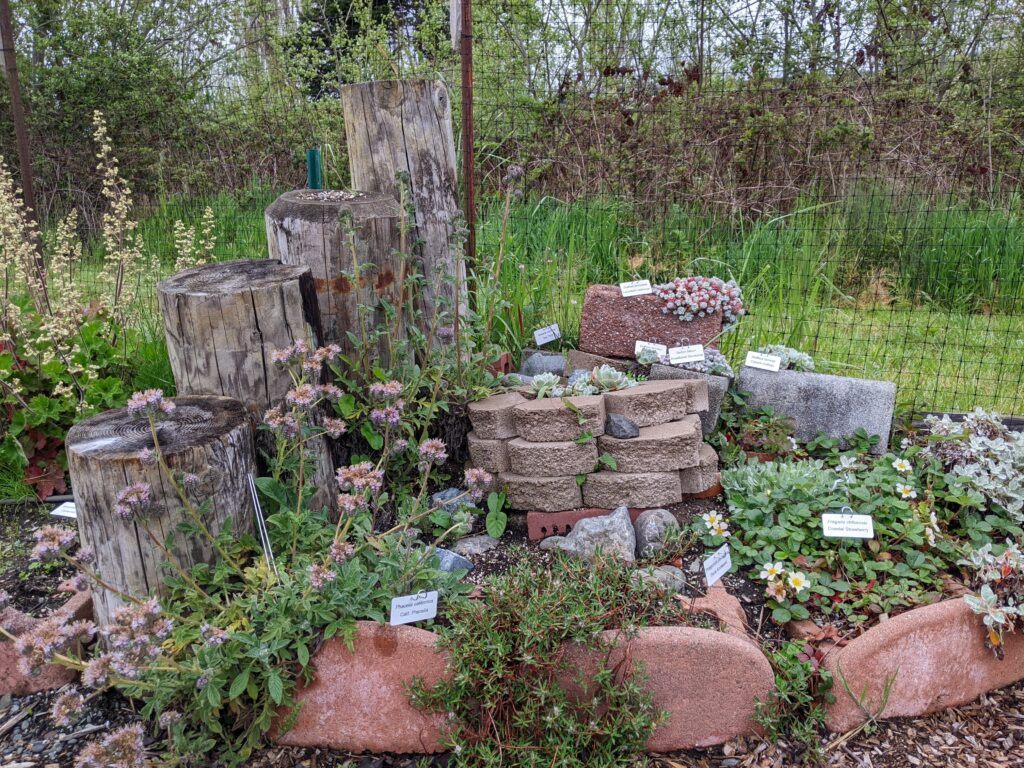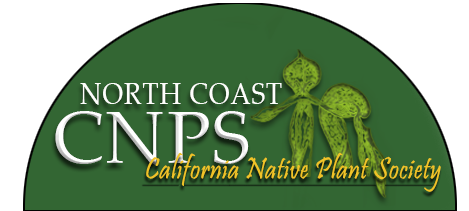CNPS Nursery
The many simple and powerful reasons to plant natives are what motivate the dedicated volunteers that keep our North Coast Chapter nursery running, as well as the inspiration for a new demonstration garden at our nursery site.
In keeping with its mission to promote and provide native plants, our chapter aims to showcase design possibilities for native gardens and some of the many options for incorporating a variety of native plants. The garden also functions as a living seed bank for the future, similar in purpose to the many spaces that local non-profit Lost Foods has worked to create in the area, but much smaller in scope.
Visit Us
Our demonstration garden is located at the CNPS nursery site at the Freshwater Farms Reserve in Eureka. The garden is open for viewing during our weekly Nursery Volunteer Hours and all weekend during our semi-annual plant sales in the Fall and Spring.
Starting our Garden from Scratch in 2019
To prepare the space, with many volunteers and a visiting crew from the organization Helping Humboldt, we weeded, sheet mulched with cardboard and a couple of thick layers of rice straw and wood chips donated by our landlords, the North Coast Regional Land Trust, and built raised areas to fill with the saved and purchased soil. Once we had built up our planting areas and done the work to help keep weeds at bay, we started planting. There are many sources of information available on variations of this relatively inexpensive technique. It can be scaled for anything from our small garden space to larger lawn conversion projects.


With sage guidance from the collective knowledge of CNPS nursery volunteers involved in the project, the garden layout was based loosely on principles from a book about the “Plant Community Approach” to garden design by Glenn Keator and Alrie Middlebrook.

While we definitely factored in the importance of considering height, spread, bloom time, etc. in our design, Keator and Middlebrook emphasize appropriate companion planting based on community type, which usually correlates to similar or synergistic plant needs like water, sun, and soil type, and promotes beneficial plant community interaction by grouping plants that have co-evolved over long periods of time.
The CNPS demonstration garden features five basic community types in miniature: Mixed Evergreen, Redwood Forest, Chaparral, Grassland, and Bog or Riparian. We also included a small area for succulents and coastal plants and another for shade plants. With the space available, complete fidelity to plant community types was not strictly adhered to – there are also overlaps in our approximated “eco-regions,” as well as plants that occur in multiple communities.
When in doubt about how to choose and group plants, Calscape.org and Calflora.org are both great resources. Calscape provides most details you would want to learn or verify, with advanced search options that allow you to search by guidelines like water requirements, bloom season, region, or even plant attributes like deer resistance.
Calscape plant profiles often provide a list of common companion plants and CF usually lists the plant communities associated with a particular species (categorized more specifically than the community types laid out for home gardeners by Keator and Middlebrook)
Whether creating a new garden space, adding natives to your existing landscape, or planting in containers, there are many approaches. We hope our garden helps demonstrate some of the possibilities and above all, that the choice to plant natives doesn’t mean you need to sacrifice having a colorful and attractive garden.
